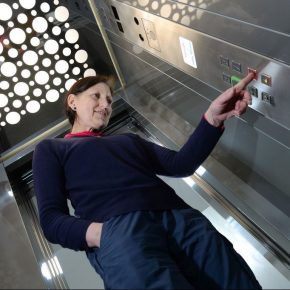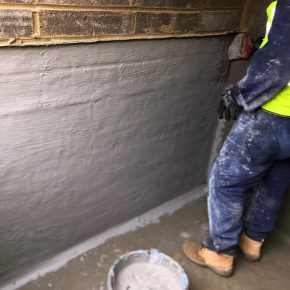
Vapour control and vapour barrier installation
It is well known that using an AVCL (Air and Vapour Control Layer) in a building envelope will help to gain optimum energy efficiency and thus promote building longevity. This, however, can only be realistically achieved if the standard of installation is high.
Over the course of a normal winter’s day up to 0.7kg of water vapour can pass through a 1mm gap over 100mm building component thickness, across 1m length at 10Pa pressure difference. The following article covers some best practice experience sharing by the DuPont Tyvek® Technical team on how to ensure a successful installation.
Using AVCL will allow a building to achieve maximum energy efficiency
Continuous sealing
To achieve a satisfactory level of airtightness, vapour control and vapour barrier must be sealed at all laps, junctions and penetrations. To reduce the risk of inadequate sealing, it is recommended to keep penetrations to a minimum and consider a services void for electrical fittings, e.g. sockets, light fittings, etc. A services void can be created by spacing off the internal lining (plasterboard) from the vapour control and vapour barrier. Timber battens, minimum 25mm may be used for this.
Not all penetrations are avoidable
For penetrations, such as windows, doors or pipework that cannot be addressed with a services void, careful attention must be paid to sealing. Those penetrations can be sealed with standard acrylic tape (Tyvek® single sided) or flexible tape (DuPont Flexwrap made of an elastic grade Tyvek® with a butyl adhesive). The advantages of flexible tape compared to conventional tape include: Faster installation, as it requires less tape strips to be cut and applied. Safer installation due to its flexibility, the tape easily adapts to shapes.
To ensure a good bond and tight sealing, it is crucial to press the tape firmly onto the membrane and to the item being sealed.
Repair all damage
Any accidental rips, tears or perforations made in the membrane should be immediately made good to avoid air leakage after installation. The damaged area may be repaired with tape, but extensive damage should be covered with an extra piece of membrane laid over the damage and sealed with tape. The new ‘patch’ should extend at least 100mm around the damage in all directions.
Latest news

31st March 2025
Stannah Lifts urges lift owners to prepare for the PSTN switch over
Stannah Lifts, a leading provider of lift solutions, is calling on businesses and facility managers to act now and upgrade their lift communications systems to ensure they are ready for the UK’s new high-speed, GSM digital network.
Posted in Accessibility, Articles, Building Industry News, Building Products & Structures, Building Regulations & Accreditations, Building Services, Facility Management & Building Services, Health & Safety, Information Technology, Interiors, Lifts, Restoration & Refurbishment, Retrofit & Renovation
31st March 2025
Delta: Lift Pit Waterproofing - Type A solutions
Delta Membranes has recently worked on a project whereby the scope was to provide a waterproofing solution to a newly constructed lift pit for a four-storey residential block.
Posted in Articles, Building Industry News, Building Products & Structures, Building Services, Case Studies, Concrete, Cement, Admixtures, Damp & Waterproofing, Facility Management & Building Services, Restoration & Refurbishment, Retrofit & Renovation
31st March 2025
HMG Paints renew partnership with Belle Vue Aces Speedway
HMG Paints has renewed its partnership with Belle Vue Aces for the 2025 season. This year marks a particularly exciting chapter for Belle Vue Speedway, as the club and National Speedway Stadium will host an electrifying double-header of the FIM Speedway Grand Prix in 2025.
Posted in Articles, Building Industry News, Building Products & Structures, Case Studies, Interiors, Paints, Paints, Coatings & Finishes, Posts, Restoration & Refurbishment, Retrofit & Renovation
31st March 2025
Ideal Heating sponsored CIBSE BPA Engineer of the Year announced
As the sponsor of the Engineer of the Year award at the Chartered Institution of Building Services Engineers (CIBSE) Building Performance Awards, Ideal Heating Commercial was delighted to present the award to Volkan Doda, Head of Design Technologies at Atelier Ten.
Posted in Articles, Awards, Building Associations & Institutes, Building Industry Events, Building Industry News, Building Products & Structures, Building Services, Facility Management & Building Services, Heating Systems, Controls and Management, Heating, Ventilation and Air Conditioning - HVAC, Pipes, Pipes & Fittings, Plumbing, Retrofit & Renovation
 Sign up:
Sign up: